
Posted by
Shay Harel
Late last week our SERP Feature tool tracked an odd shift in the number of Image Boxes appearing on Page One of the SERP. Taking place on the desktop SERP (to the exclusion of mobile), that little row of pictures, known commonly as Image Box fell from showing within 24.2% of Page One results to just 11.9% in a single day.
Such an unusual spike left us wondering, where have all the images gone? Did they just fall off the face of the Earth? Did they get pushed down? Were they replaced with another feature? Were all Image Boxes affected or simply those that related to certain topics or categories?
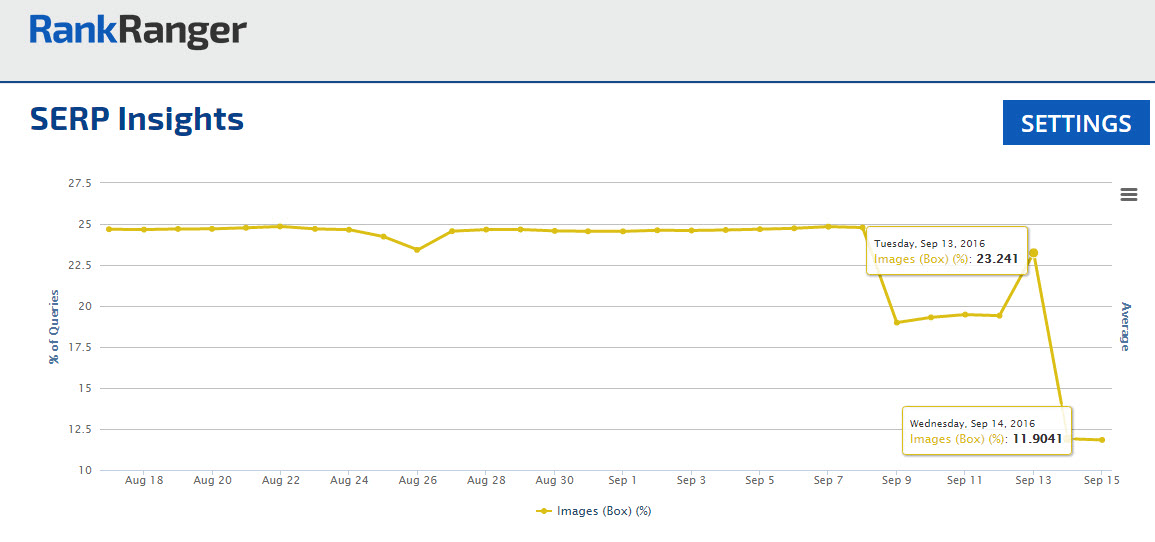
Image Box is removed from over 50% of Page One results within a one day span
A Snapshot of Image Box’s New Placement
Before I get into the whole story of Google’s new Image Box placement trends, allow me to just put out there what we found in a clear and entirely concise manner.
- Between September 13th and 14th 50% of Page One Image Boxes no longer displayed.
- There was a 57% migration of Image Boxes off Page One of the SERP and either onto Page Two or removed altogether.
- A query that produced a Page Two Image Box, had a Page One knowledge Panel. As such, it appears Google is using the images within Knowledge Panel as substitute for a Page One Image Box.
- Those queries that had both a Page One Image Box, as well as a Knowledge Panel, presented content that was strongly related to or associated with an image.
Image Boxes Move to Page Two
If you could count on Image Box to do one thing, it was to always show pictures of all the beautiful people, actors, actresses… as well as some not so beautiful people like famous hockey players without any teeth. Fearing we would never be able to gaze upon such glorious, as well as gruesome faces, our development team and I started manually testing keywords related to celebrities. We very quickly found that many Image Boxes were appearing, but not on Page One of the SERP… they were shifted to Page Two.
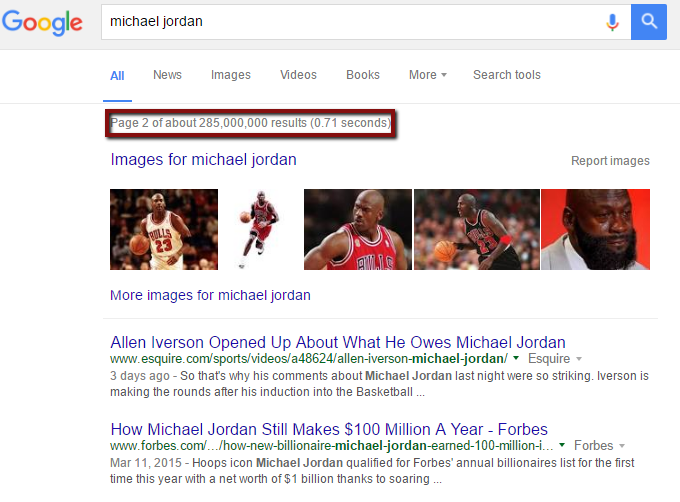
Image Boxes related to famous persons within pop culture were moved to Page Two of the results
Image Box Data Experiment
Having seen this Page Two Image Box push we put together an extensive list of keywords that related to celebrities and the arts. We also included various public, business, and political figures within our keyword set. Lastly, we included keywords related to products, objects, locations, and landmarks that previously showed Image Boxes on Page One.
When we first looked at the percentage of all results that showed an Image Box on Page One of the SERP versus those with the feature on Page Two or without an Image Box at all we found:
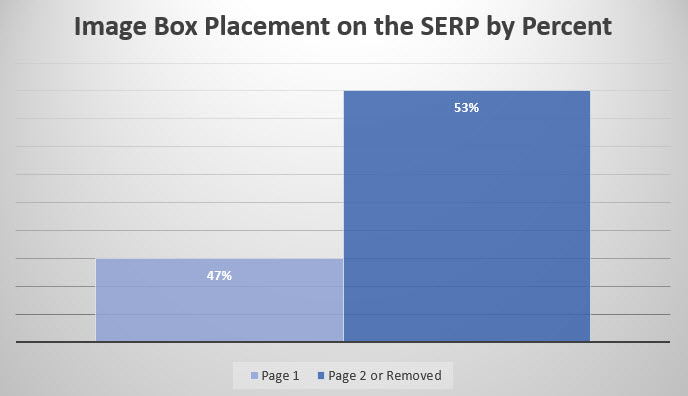
This is certainly an interesting number as between the 13th and 14th we saw Image Box lose about 50% of its Page One results. However, we were still left with a question as to what was the deciding factor that determined if an Image Box remained on Page One or was shifted to Page Two.
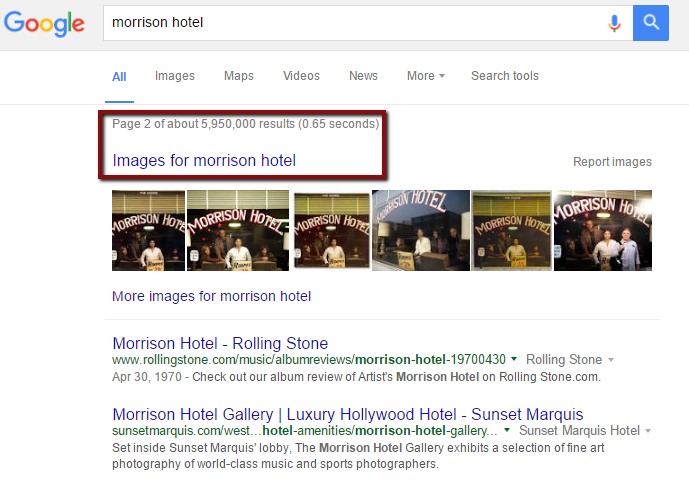
Queries for movie and album titles also showed with an Image Box that had migrated from Page One of the SERP to Page Two
By way of example, the chart below illustrates select keywords that showed with Image Boxes on Page One and those with Image Boxes on Page Two:
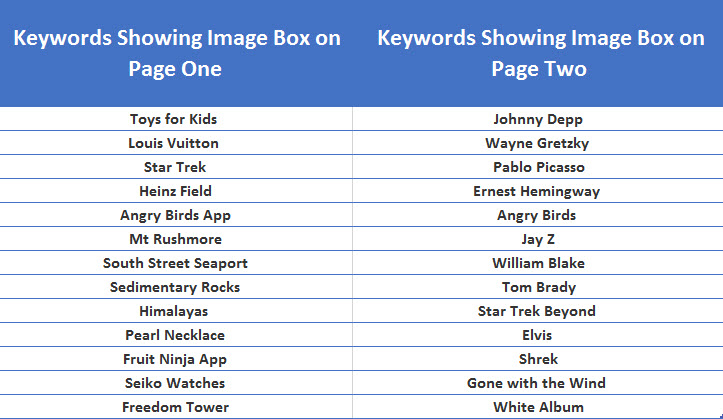
Bringing Politics Into the Matter
Interestingly enough, we saw a trend where some politicians would not appear with an Image Box at all anymore. For example, searches for Colin Powell, Newt Gingrich, and current US Senator, Ben Cardin, did not display with an Image Box on Page One or Page Two.
The trend appears to be that Image Box will not appear at all, even on Page Two, for queries related to some politicians
Coincidentally, all of the politicians that did not have an Image Box tied to them in the results had a form of Knowledge Panel that presented a multitude of images. It would appear that the images displayed within Knowledge Panel are meant to act as a substitute.
When a query that had an Image Box previously shows without one, a Knowledge Panel containing images will generally appear on Page One of the SERP
Knowledge Panel Images Replace Page One Image Boxes
When we looked at all of our results, we found that this “Knowledge Panel correlation” held true all the way through. All of the results that had an Image Box on Page Two, had a Knowledge Panel on Page One. It became very clear to us that Google, when serving images within a Knowledge Panel, deemed the images within the Image Box as redundant and as such moved the box to Page Two of the SERP.
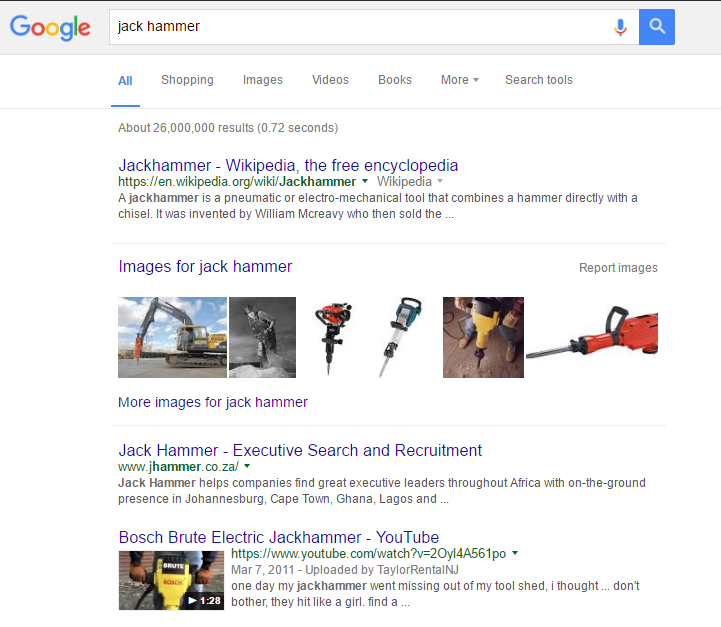
Queries that brought up an Image Box previously but not a Knowledge Panel continue to produce an Image Box on Page One
When it came to searches for apps, it appeared that when the keyword did not include the word “app” in it, the Image Box was on Page Two of the SERP.
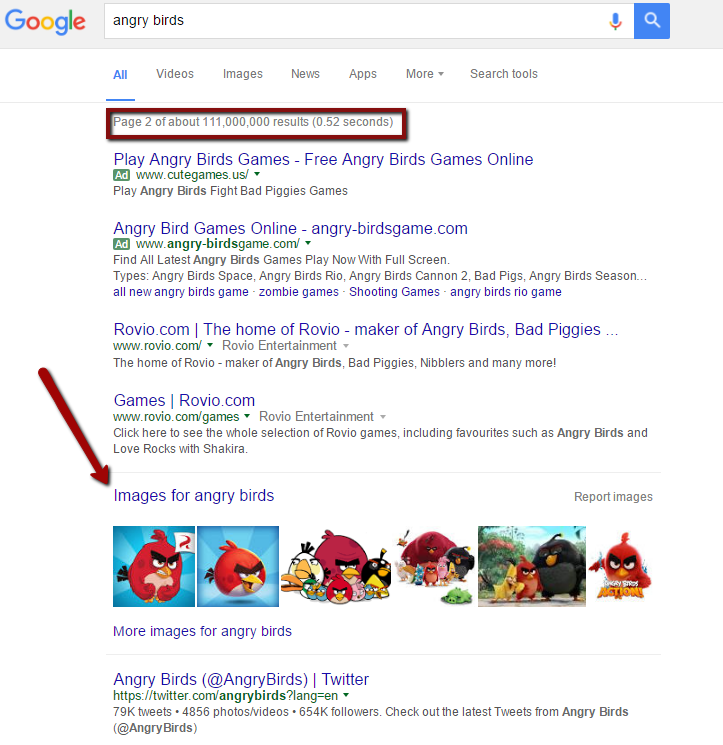
Queries related to popular apps, but without the exact phrase “app” display with a Knowledge Panel on Page One and an Image Box that has been pushed to Page Two
Taking a closer look, those keywords related to an app, but that did include the term “app”, not only appeared on Page One of the SERP, but had no Knowledge Panel, thus corroborating our theory.
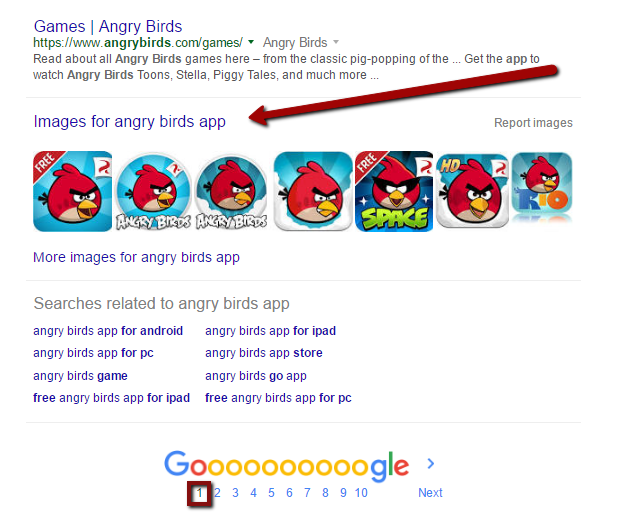
Indicating Google’s trigger for Page Two Image Box placement, app related queries that do include the term “app” show with an Image Box on Page One, but without a Knowledge Panel
Image Box Exceptions
Based on the data we saw thus far, we thought there to be a very simply formula, a Knowledge Panel on Page One meant either no Image Box or an Image Box on Page Two. As such, we expected to see no results showing both an Image Box and a Knowledge Panel on Page One. However, in reality around 40% of keywords that showed a Page One Image Box also had a Knowledge Panel.
However, we found that overwhelmingly the appearance of both an Image Box and Knowledge Panel related to when the keyword was associated with a specific brand product or location/landmark.
For example, keywords such as Statue of Liberty and Space Needle produced SERPs that included both an Image Box and Knowledge Panel.
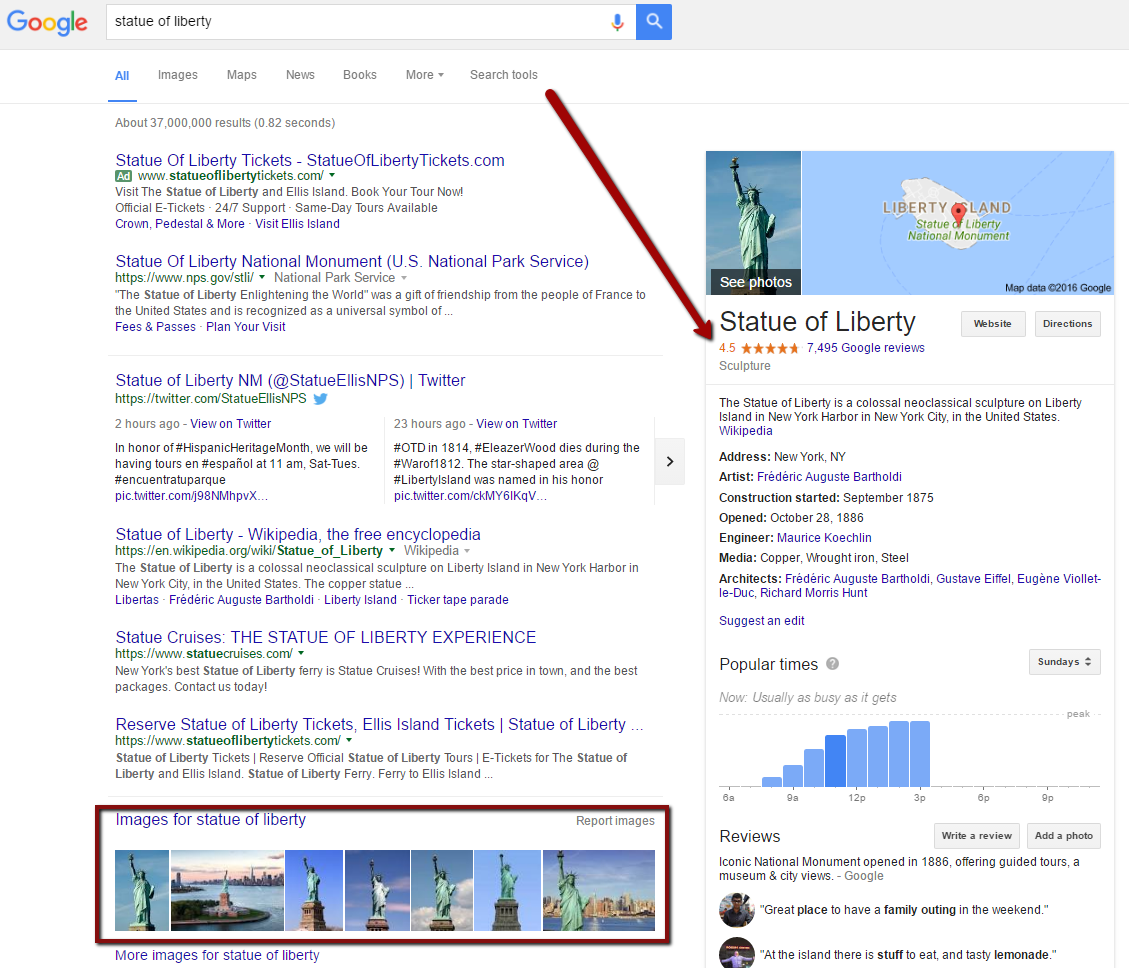
Queries related to locations or landmarks display with both a Page One Image Box and a Knowledge Panel
This makes good and obvious sense. When an image has a deep and almost intrinsic relationship to understanding the keyword, Google keeps the Image Box on Page One. The example of the Statue of Liberty is a perfect illustration as the image itself has far reaching recognition and forms a part of a user’s understanding.
Further support to this is illustrated by the Louis Vuitton example. Here the Knowledge Panel refers to the corporation, person, and history, while the Image Box presents actual products. When Google notices that the Knowledge Panel and the Image Box serve different functions, it keeps both present on Page One.
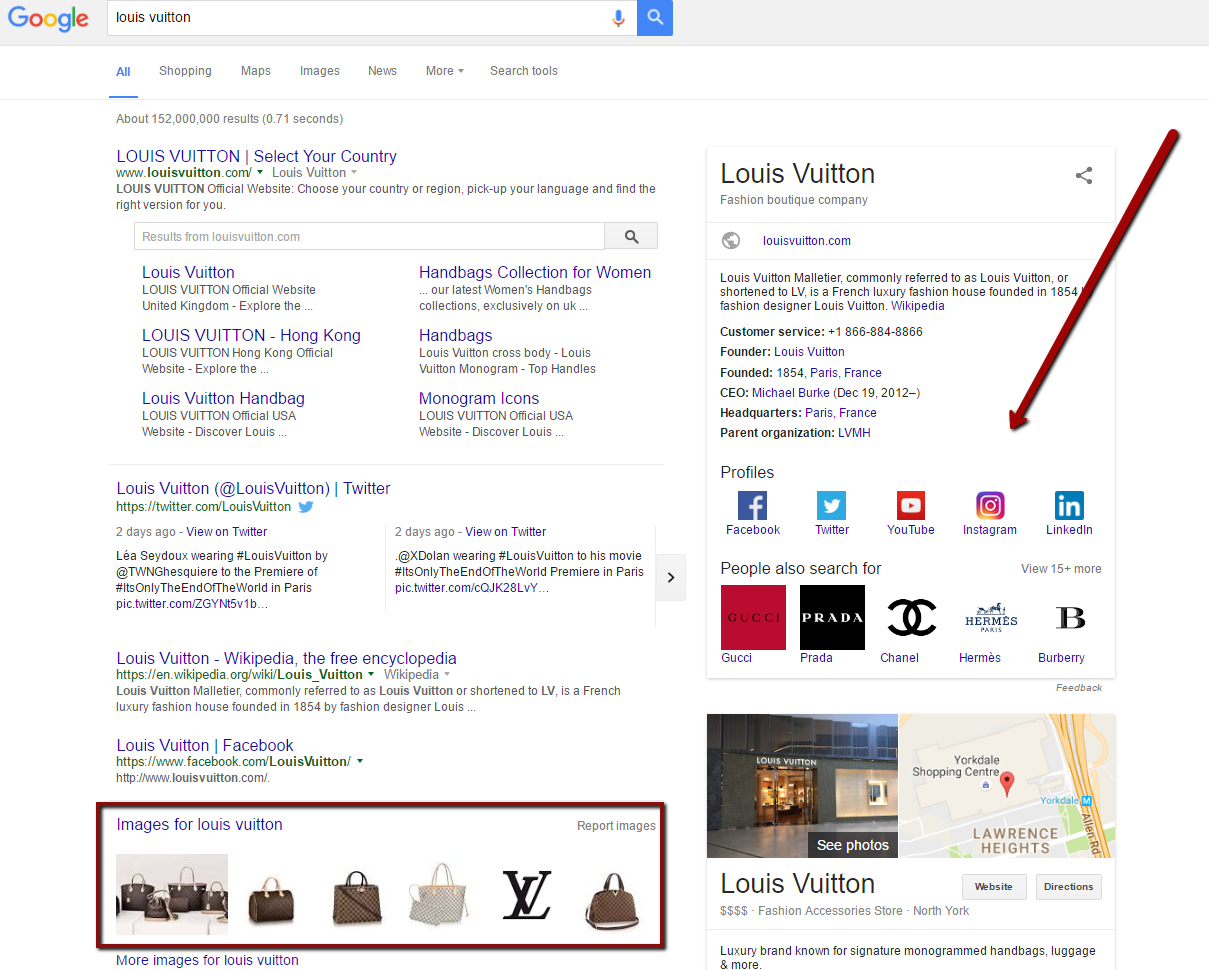
When an Image Box reflects a keyword from a secondary perspective, both it and a Knowledge Panel appear on Page One
Our Image Box Experience Summary and Conclusions
When you need them, Google Image Boxes are there. However, when an Image Box is superfluous, when in a sense it is duplicate content in that a Knowledge Panel is present, Image Box exits stage left to Page Two of the SERP (if at all). All of the keywords we tested that resulted in Image Box showing on Page Two had a Knowledge Panel that went with it on Page One of the SERP. Of the cases where both an Image Box and Knowledge Panel appeared on Page One of the SERP, the overwhelming majority of those keywords either had strong association to an image, were not fully explained without the image, or had images that related to a different aspect of the keyword. Thus, the fact that there are keywords bringing both features up, only bolsters what our experiment showed… when only ancillary, Image Box is pushed off Page One. The question is, will Image Box remain on its new Page Two home, or will Google drop it altogether… time will tell.
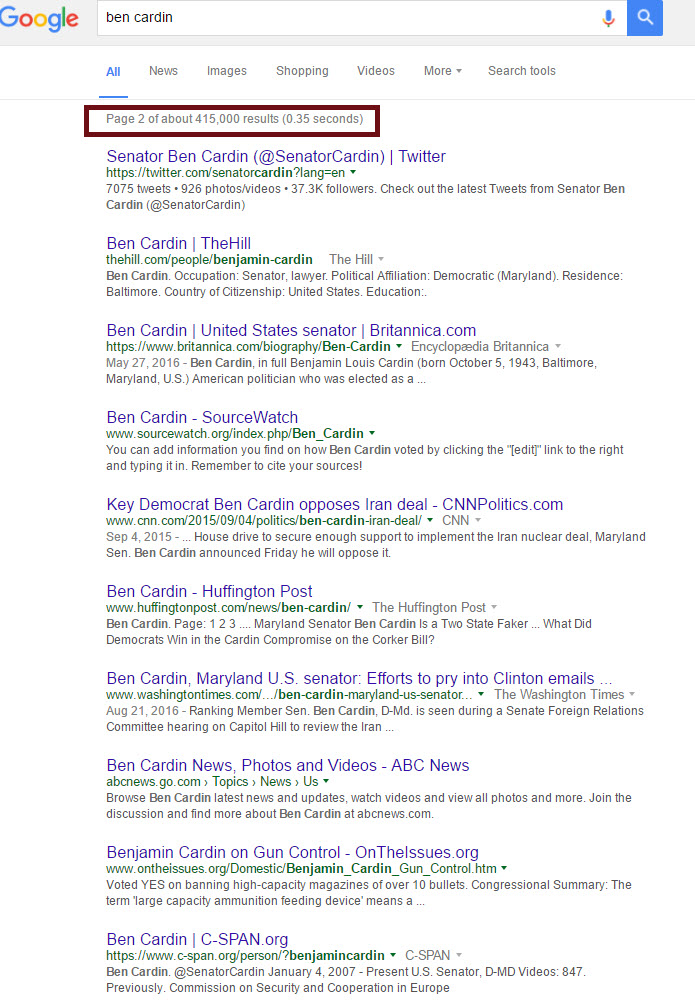
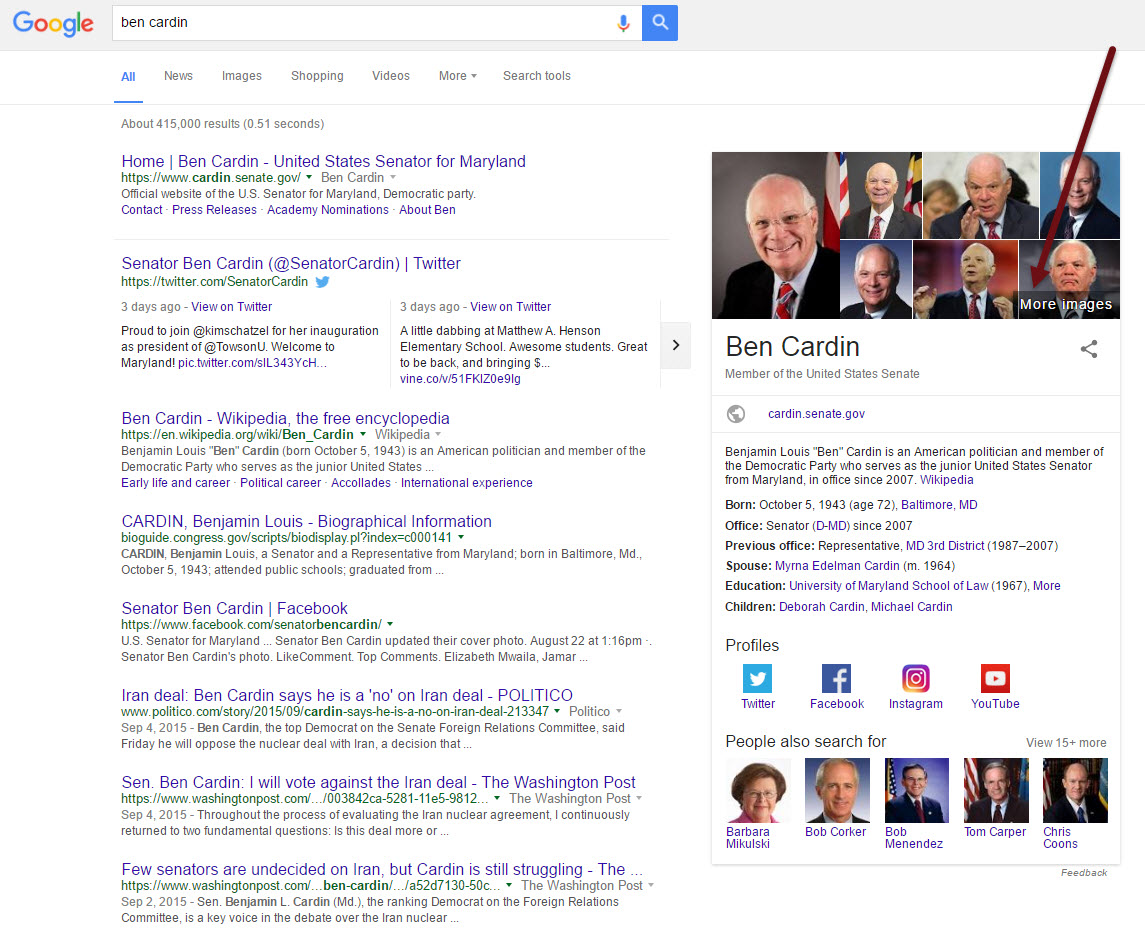

![YMYL Websites: SEO & EEAT Tips [Lumar Podcast] YMYL Websites: SEO & EEAT Tips [Lumar Podcast]](https://www.lumar.io/wp-content/uploads/2024/11/thumb-Lumar-HFD-Podcast-Episode-6-YMYL-Websites-SEO-EEAT-blue-1024x503.png)


